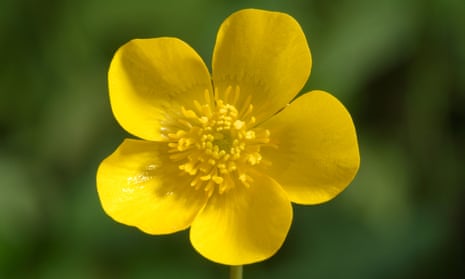Do you like butter? Hold a buttercup under your chin and folklore says if there is a yellow reflection on your skin it means you do. But the real reason the flowers seem to shine with an intense glittering yellow is nothing to do with butter but about advertising the plants to insect pollinators from a great distance.
Buttercups get their bright colour from yellow pigments in the petals’ surface layer, and their shiny gloss is thanks to layers of air just beneath the surface reflecting the light like mirrors. The glowing phenomenon is unique in plants, although something similar happens with some butterfly and bird wings.
The buttercup’s sparkling light also needs the sun to be high in the sky, so May is a good time of year for the flowers.
And buttercup flowers also track the sun. On cold days, the petals make a cup shape like a satellite dish, collecting solar energy from sunshine and warming up the flowers, which makes them even more inviting to insects, perhaps because it helps them to keep up their own temperature.
The cup-shaped flower also focuses the sunlight into its centre where the reproductive organs are warmed up, boosting the ripening of pollen in the stamens and improving the chances of fertilisation in the carpels. And after the flower is pollinated the solar heat might help seed development.
The solar tracking is even more useful in the chill air of alpine regions, where the flowers warm up by concentrating the sunshine, sometimes boosting temperatures by more than 3C.

Comments (…)
Sign in or create your Guardian account to join the discussion